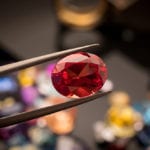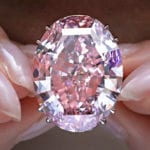 Mysteries
Mysteries  Mysteries
Mysteries  Creepy
Creepy 10 Scary Tales from the Middle Ages That’ll Keep You up at Night
 Humans
Humans 10 One-of-a-kind People the World Said Goodbye to in July 2024
 Movies and TV
Movies and TV 10 Holiday Movies Released at Odd Times of the Year
 Politics
Politics 10 Countries Where Religion and Politics Are Inseparable
 Weird Stuff
Weird Stuff 10 Freaky Times When Famous Body Parts Were Stolen
 Miscellaneous
Miscellaneous 10 Interesting Things Manufacturers Stopped Making and Why
 Gaming
Gaming 10 Funny Tutorials in Games
 History
History 10 Fascinating Little-Known Events in Mexican History
 Facts
Facts 10 Things You May Not Know about the Statue of Liberty
 Mysteries
Mysteries 10 Devastating Missing Child Cases That Remain Unsolved
 Creepy
Creepy 10 Scary Tales from the Middle Ages That’ll Keep You up at Night
 Humans
Humans 10 One-of-a-kind People the World Said Goodbye to in July 2024
Who's Behind Listverse?

Jamie Frater
Head Editor
Jamie founded Listverse due to an insatiable desire to share fascinating, obscure, and bizarre facts. He has been a guest speaker on numerous national radio and television stations and is a five time published author.
More About Us Movies and TV
Movies and TV 10 Holiday Movies Released at Odd Times of the Year
 Politics
Politics 10 Countries Where Religion and Politics Are Inseparable
 Weird Stuff
Weird Stuff 10 Freaky Times When Famous Body Parts Were Stolen
 Miscellaneous
Miscellaneous 10 Interesting Things Manufacturers Stopped Making and Why
 Gaming
Gaming 10 Funny Tutorials in Games
 History
History 10 Fascinating Little-Known Events in Mexican History
 Facts
Facts 10 Things You May Not Know about the Statue of Liberty
10 Rare and Expensive Gemstones
There are more than 4,000 minerals that naturally occur on Earth. Many of these are almost impossible for most people to distinguish. A rock is a rock to most people. But some stones stand out. Humans love sparkly things, and luckily, some minerals and gemstones can be both pretty and rare—two things humans prize.
This means that some gemstones can be quite pricey if you want to get your hands on them. Here are some of the rarest and most expensive rocks you can spend your money on.
Related: 10 Most Expensive And Delectable Desserts
10 Musgravite
Musgravite is one of the rarest of all the minerals that can be turned into gemstones. It was first discovered in the Musgrave Range of mountains in Australia in 1967. In its raw state, it looks like a shiny grey mineral but not really one worth setting into jewelry. Since its discovery, the mineral has been found in some hard-to-reach places like Antarctica and Greenland, and it would have remained a mere mineralogical curiosity were it not for a find in Tasmania.
There, a few crystals of Musgravite that could be cut and polished were dug up. Most of the gemstone-quality Musgravite gems that have appeared on the market appear either a greyish olive green or slightly violet color. However, one has been discovered that contained small tube-shaped inclusions that reflect color with a vivid iridescence.
How much will this drab stone set you back? Prices for the best quality Musgravites can reach $35,000 per carat.[1]
9 Alexandrite
It is always nice to have something named after you, so the Russian crown prince Alexander must have been happy to have this mineral named after him in 1830. Alexandrite was found in the Ural Mountains, and almost immediately, something strange was noticed about it. When looked at in daylight, the stone is a vibrant green, but by candlelight, it is a deep red. This led to it being described as “emerald by day, ruby by night.” Because red and green were the colors of the Imperial Russian flag, this effect gave the stone immense popularity in Tsarist Russia.
The color change occurs because of both the way the crystal absorbs light and because of how the human eye detects red and green light. For this startling and unusual property, the price of Alexandrite was, and remains, high. For a stone that displays two clear and distinct colors, you might have to pay $70,000 per carat.[2]
8 Benitoite
In 1907, a prospector named James M. Couch thought he had struck gold, or at least sapphire when he pulled rich blue gemstones out of the ground in the San Benito mountains of California. When he sent samples of the stones to a mineralogist, however, it was discovered that what Couch had found was a never-before-seen mineral. It was named Benitoite.
The stone was soon being mined through what was described as a “glory hole.” Because Benitoite is a fairly soft mineral, many of the gemstones were damaged by the miners as they extracted them. The rarity of Benitoite is due to the specific conditions that must exist for it to form. It only grows under high-pressure and low-temperature zones where tectonic plates meet. Benitoite is now the official gemstone of California.
A good one carat gem of Benitoite might cost $8000, but prices soon rise for larger stones because so few big stones are found.[3]
7 Grandidierite
Grandidierite is one of the rare minerals that displays what is known as pleochroism—it appears in different colors depending on the direction you look at it. It can reveal dark green, colorless, and dark blue hues just by turning it. This occurs because of how the atoms in the crystal lattice are arranged in three dimensions. Grandidierite was discovered in Madagascar in 1902 and has since been found in a number of other places, but few gemstones turn up on the open market.
Most Gradidierite that is dug up is opaque and misty, but a few clear examples have been extracted near the site of the original discovery. It is only since 2015 that the gemstone Gradidierite has appeared on the open market in any quantity. Only 300 carats of clear Gradidierite have been produced.
The very first gemstone-quality Grandidierite was sold in 2003 and cost $50,000, though it weighed only 0.29 carats.[4]
6 Serendibite
Serendibite was discovered in 1902 in Sri Lanka and is named for the old Arabic name of that country. At first, Serendibite looks like a poor candidate for becoming a gemstone. Some can appear a shiny black color, but others have a rough and greyish exterior. Until 2005, only three faceted Serendibite gems were known to exist. They fetched around $14,000 per carat when sold.
In 2005, a new source of Serendibite gems was discovered in Myanmar, so the price of these stones has dropped recently. But there remains a strong desire for collectors because of the range of colors these gems can have due to their complex chemical structure.
Some Serendibites are a dense black but others have been found that are dark blue, greyish, pale green, or brown.[5]
5 Poudretteite
Many mineralogists would cry tears of joy if they discovered only the tiniest fragment of a never-before-identified mineral. That must have been the reaction when tiny crystals of Poudretteite were revealed to be new to science in 1986. But there was no hope that these beautiful pink crystals would ever be turned into gems, given their minuscule size. Then, in 2000, a remarkable stone was found.
It was not a rough crystal pulled from the Earth but an already cut and polished gem. Found in a market in Burma, the gem weighed nearly 9.5 carats. No Poudretteite this large had ever been discovered before, let alone turned into a finished gemstone. This large stone was almost flawless with a pale pink hue.
Since this discovery, several more gems of Poudretteite have been found in the same location. Some are a very attractive deep pink or purple. However, you might have to pay $5,000 per carat for one. The first large Poudretteite now sits in the Smithsonian.[6]
4 Jadeite
The stone that is commonly called Jade is actually two minerals that look very similar. One, nephrite, has been used since prehistory to make jewelry and even tools. The other, Jadeite, is much rarer and harder. Jadeite was known in China as Imperial Jade. For the societies of Meso-America, Jadeite was more valuable than gold.
Not only is Jadeite tough, but it is also carvable into intricate forms that have made it a favorite material for artists—if their employers could afford it. Jadeite can appear in colors ranging from purple to white to blue and to a whole variety of greens from opaque to translucent. It is the green Jadeite that was most highly prized in China.
In 2014, a necklace made from 27 vivid, emerald-green jadeite beads was sold at auction for $27.4 million.[7]
3 Diaspore
Discovering a new type of gem happens more by accident than by skill. In the 1970s, workers at a bauxite mine in Turkey found that they were digging up annoying impurities. Bauxite is the useful ore that aluminum is purified from, so the miners who found crystals mixed in with it would pick them out so that the bauxite would remain pure. Little did they know that they were handling expensive and rare gemstones.
Diaspore had been discovered in 1801, but no examples that could be faceted had ever been found. With the deposit in Turkey producing so much, however, it was possible to market diaspore and supply the jewelry market. Selling under the trade names Ottomanite, Zultanite, and Csarite, gems of green, orange, and red can be found throughout the world.[8]
2 Taaffeite
Spinels have been prized in jewelry for hundreds of years. Because some are intensely red, they have sometimes been mistaken for rubies in the past. The Black Prince’s Ruby that sits in the British crown jewels today is actually a spinel. So it was something of a surprise to find that a new mineral had been masquerading as a spinel itself.
In 1945, Count Edward Charles Richard Taaffe bought some gemstones, including one that was said to be a spinel. He discovered it was an entirely new mineral, so it was named in his honor. This remains the only time a mineral has been identified from an already cut stone.
Since its discovery, the amount of Taaffeite on the market has remained very limited. Some stones that are flawed or pale in color can be bought for around $1,000 per carat. But if the gem is richly colored and clear, they can reach up to $15,000 per carat.[9]
1 Melo Melo Pearls
Not all gems are the product of millions of years beneath the Earth. For thousands of years, humans have sought out and gathered pearls. In the ancient world, pearls could be just as valuable as other gems. Today, thanks to the ability to cultivate pearls in oysters, a string of pearls is within the budgetary reach of most people—but only if they are ordinary pearls.
Not all pearls come from oysters. Some marine snails also form pearls as a method of protecting themselves from irritants. The Melo melo is a very large sea snail native to south-east Asia. When something gets caught inside the shell of the Melo, it secretes layers of calcite and aragonite over it, which looks quite different from the nacre found on more common pearls. Over the years, this can form a large pearl. And if you find one, it can be worth a fortune.
While most ordinary pearls are tiny, the pearls of the Melo melo can be centimeters across. These pearls are harder than other pearls and can have a range of colors. The most sought-after pearls are a creamy orange with flamelike patterns across their surface. Because of the rarity of the melo melo pearl, the chance that any individual snail will make a pearl is scarce, as it can take decades for one pearl to be formed. Because of this and their beauty, these pearls can fetch up to $700,000 at auction.[10]








